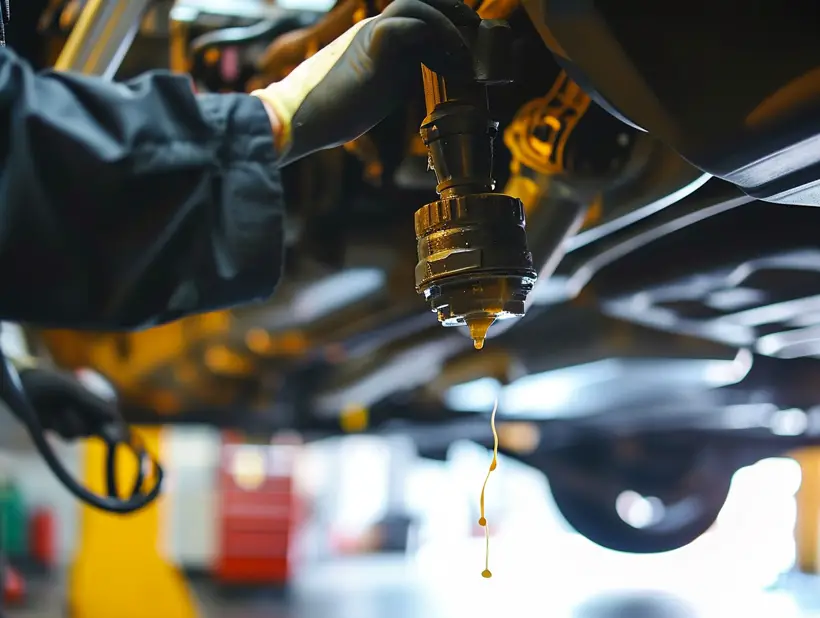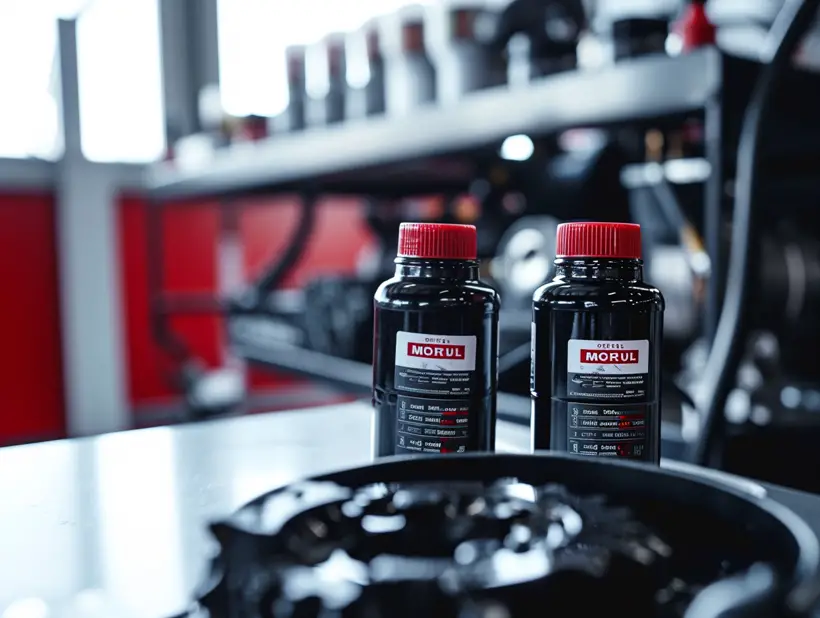What is a Differential?
A differential is an important component of a car’s drivetrain system. It is responsible for distributing the engine’s power to the wheels and allows them to rotate at different speeds. This functionality is crucial, especially when turning corners, as the wheels on the inside and outside of the turn need to rotate at different rates.
The differential is located between the drive wheels (either the rear wheels in rear-wheel drive vehicles or the front wheels in front-wheel drive vehicles) and is connected to the transmission output shaft. Inside the differential housing, you will find a set of gears that work together to transmit the power from the engine to the wheels.
Here are some key points to know about differentials:
- Gears: The differential contains a set of gears, including the ring gear, pinion gear, and spider gears. These gears work together to transfer power from the engine to the wheels.
- Function: The main function of the differential is to allow the wheels to rotate at different speeds while maintaining power distribution. It accomplishes this through the use of gears and the principle of torque distribution.
- Torque Distribution: When you make a turn, the inside wheel needs to rotate slower than the outside wheel. The differential transfers more power to the outside wheel and less power to the inside wheel to enable smooth turning.
- Types of Differentials: There are different types of differentials, including open differentials, limited-slip differentials, and locking differentials. Each type has its own advantages and is suited for different driving conditions.
- Maintenance: Regular maintenance of the differential is important for its longevity and smooth operation. This includes checking and replacing the differential fluid at recommended intervals.
Having a good understanding of what a differential is and how it functions is essential for car owners. It allows them to appreciate the importance of differential maintenance and helps them identify any potential issues that may arise. By taking care of your differential, you can extend its life and ensure optimal performance of your vehicle.
Now that we have covered the basics of what a differential is, let’s explore the steps involved in replacing the differential fluid.
Why is Differential Fluid Replacement Important?
When it comes to maintaining the health of your car’s drivetrain system, regular differential fluid replacement is essential. The differential is responsible for distributing power to the wheels and allowing them to rotate at different speeds, especially when you’re making turns. Over time, the fluid in the differential can become contaminated, causing it to lose its lubricating properties. This can lead to increased friction and wear on the gears, bearings, and other critical components.

Here are a few key reasons why differential fluid replacement is important:
1. Lubrication and Heat Management: Differential fluid plays a crucial role in lubricating the gears and bearings within the differential. As the gears mesh and rotate, they generate heat. The fluid helps to dissipate this heat and prevent the components from overheating. Regularly changing the differential fluid helps maintain optimal lubrication and heat management, thereby extending the life of your differential.
2. Contaminant Removal: Over time, the differential fluid can become contaminated with dirt, debris, and metal particles. These contaminants can accelerate wear and tear on the gears and bearings, leading to premature failure. By replacing the fluid at regular intervals, you’re effectively removing these harmful particles, keeping your differential clean and reducing the risk of costly repairs.
3. Optimal Performance: Fresh differential fluid ensures that your differential operates smoothly and efficiently. It helps to reduce friction and minimize wear on the internal components, allowing your drivetrain system to perform at its best. Neglecting to replace the differential fluid can result in sluggish performance, increased noise, and decreased fuel efficiency.
It’s worth noting that the recommended frequency for differential fluid replacement can vary depending on your vehicle make and model. It’s best to consult your vehicle’s owner’s manual or reach out to a trusted mechanic to determine the ideal interval for your specific car.
By prioritizing regular differential fluid replacement, you can extend the life of your differential, optimize your car’s performance, and potentially save yourself from costly repairs down the road. So, don’t overlook this important maintenance task. Stay proactive and take care of your car’s drivetrain system.
Next, let’s dive into the step-by-step process of replacing the differential fluid.
Signs that Your Differential Fluid Needs to be Replaced

As car owners, it’s important to pay attention to the condition of our vehicles and take proactive measures to maintain their health. One crucial aspect of car maintenance is the regular replacement of the differential fluid. By being aware of the signs that indicate the need for a fluid change, we can ensure the longevity and optimal performance of our differentials. Let’s take a look at some of the signs that your differential fluid may need to be replaced:
- Noise and Vibration: One of the first indicators that the differential fluid needs to be replaced is the presence of unusual noises or vibrations coming from the rear end of the vehicle. This may manifest as a whining, grinding, or whirring sound, especially during acceleration or when making turns. These noises can be a result of contaminated or worn-out fluid that is no longer providing adequate lubrication.
- Fluid Color and Consistency: The appearance and consistency of the differential fluid can provide valuable insight into its condition. Healthy differential fluid should be a translucent or amber color, similar to honey. If you notice that the fluid has turned dark or has a burnt smell, it’s a clear indication that it needs to be replaced. Contaminants such as metal shavings or dirt may also be present, which can hinder proper lubrication and cause damage to the differential components.
- Leaks and Low Fluid Level: A telltale sign that your differential fluid needs to be replaced is the presence of leaks or a low fluid level. If you notice puddles or spots of fluid underneath your vehicle, it’s important to address the issue promptly. Low fluid levels can lead to increased friction and overheating, putting stress on the differential and potentially causing irreparable damage.
- Difficulties in Shifting Gears: Another sign that your differential fluid may need to be replaced is experiencing difficulties in shifting gears. If you notice a delay or resistance when shifting between gears or if the gears feel rough and not as smooth as usual, it could be a result of degraded differential fluid. Inadequate lubrication can cause increased friction and hinder the smooth operation of the gears, resulting in difficulty or even failure to engage properly.
Choosing the Right Differential Fluid
When it comes to replacing the differential fluid in your car, choosing the right type of fluid is crucial for maintaining the optimal performance and longevity of your differential. The market offers a wide array of differential fluids, each with its own set of properties and specifications. In this section, we will guide you on how to choose the right differential fluid for your vehicle.

Consider Your Vehicle’s Needs
Different vehicles have different requirements when it comes to differential fluid. To ensure you select the right fluid, consider the following factors:
- Manufacturer Recommendations: Check your vehicle’s owner’s manual for the manufacturer’s recommended viscosity and specifications for the differential fluid.
- Driving Conditions: Take into account the typical driving conditions your vehicle is exposed to. For example, if you frequently tow heavy loads or drive in extreme temperatures, you may need a differential fluid with higher viscosity or additives to handle the extra stress.
- Vehicle Type: Some vehicles, such as those with limited-slip differentials or all-wheel drive systems, may require specialized differential fluids. Make sure to refer to the manufacturer’s recommendations for these specific applications.
Understanding Differential Fluid Types
Differential fluids come in different formulations, such as conventional, synthetic, and synthetic blends. Here’s a brief overview of each type:
- Conventional Fluid: Conventional differential fluids are the most common and typically the least expensive option. They provide adequate protection and lubrication for normal driving conditions.
- Synthetic Fluid: Synthetic differential fluids offer improved performance, durability, and resistance to extreme temperatures. They provide better lubrication and wear protection, making them ideal for high-performance vehicles or challenging driving conditions.
- Synthetic Blend: Synthetic blend differential fluids combine the benefits of both conventional and synthetic fluids. They offer enhanced performance at a more affordable price than full synthetic fluids.
Consulting with a Professional
If you’re unsure about which differential fluid is best suited for your vehicle, it’s always a good idea to consult with a trusted mechanic or refer to your vehicle’s manufacturer recommendations. They will be able to provide valuable insights and help you make an informed decision.
Tools and Materials Needed for Differential Fluid Replacement
When it comes to replacing the differential fluid in your car, having the right tools and materials on hand is essential. This ensures a smooth and efficient process while extending the life of your differential. Here are the tools and materials you’ll need for the job:
- Ratchet and Socket Set: A ratchet and socket set is necessary for removing the differential drain plug and fill plug. These plugs allow you to drain the old fluid and refill it with fresh fluid. Having a set with a variety of socket sizes ensures that you have the correct one for your specific vehicle.
- Jack and Jack Stands: Safely raising your car off the ground is crucial for accessing the differential. A hydraulic jack and sturdy jack stands are must-have items for this task. Remember to always follow proper safety procedures when working underneath your vehicle.
- Drain Pan: A drain pan is used to catch the old differential fluid as it drains from the differential housing. Make sure to choose a pan that is large enough to hold the volume of fluid that your differential requires.
- Gloves and Safety Glasses: It’s important to protect yourself while working on your car. Wearing gloves and safety glasses will help keep your hands and eyes safe from any potential hazards.
- Funnel: A funnel is necessary for adding the new differential fluid to the differential. Look for one with a narrow spout to ensure accurate pouring and prevent spills.
- Differential Fluid: The most important material you’ll need is the correct differential fluid for your vehicle. Consult your vehicle’s owner’s manual or a trusted mechanic to determine the type and quantity of fluid needed. Using the wrong fluid could damage your differential.
To sum it up, having the right tools and materials for differential fluid replacement is crucial. A ratchet and socket set, jack and jack stands, drain pan, gloves and safety glasses, funnel, and the correct differential fluid are all essential items. With these in hand, you’ll be well-prepared to tackle the task and extend the life of your differential. Stay tuned for the next section where we’ll guide you through the step-by-step process of replacing the differential fluid.
Step-by-Step Guide to Replace Differential Fluid
Now that we understand the importance of regular differential fluid replacement, let’s dive into the step-by-step process of how to replace the differential fluid in order to extend the life of your differential. With the right tools and materials, this process can be done at home, saving you time and money.
Here’s a detailed guide to help you through the process:
- Gather the necessary tools and materials:
- Prepare the vehicle:
- Locate the differential:
- Raise the vehicle:
- Drain the old fluid:
- Clean the drain plug:
- Replace the drain plug:
- Fill the differential with new fluid:
- Slowly pour the recommended amount of new differential fluid into the funnel.
- Refer to your vehicle’s owner’s manual for the specific fluid capacity

Tips for Extending the Life of Your Differential
When it comes to the longevity and performance of your car’s differential, regular maintenance plays a crucial role. Here are some essential tips to help you extend the life of your differential and ensure smooth operation:
- Check the fluid regularly: Differential fluid is vital for lubricating and cooling the gears inside the differential. Regularly check the fluid level and condition, as recommended by the vehicle manufacturer. Table 1 below shows the recommended service intervals for differential fluid change, based on different types of vehicles.
- Use the right fluid: Differentials require specific types of fluid, depending on the vehicle make and model. Consult your vehicle’s owner’s manual or consult a trusted mechanic to determine the appropriate fluid type. Using the wrong fluid can lead to performance issues or even damage to the differential.
- Change the fluid at recommended intervals: Over time, the differential fluid can become contaminated with debris and worn-out particles. Changing the fluid at regular intervals helps remove this buildup and ensures proper lubrication. Refer to the owner’s manual or consult a professional to determine the recommended interval for fluid changes. Table 2 below provides general guidelines for differential fluid change intervals.
- Inspect and replace worn seals: The seals around the differential are responsible for keeping the fluid in and contaminants out. Inspect these seals regularly for signs of wear or leaks. If you notice any issues, have the seals replaced promptly to prevent fluid leakage and protect the differential from damage.
- Avoid excessive towing and aggressive driving: The differential is subjected to significant stress during towing and aggressive driving. Excessive strain can cause the fluid to break down more quickly and lead to premature wear of the gears. Avoid unnecessary strain on the differential by driving responsibly and within the manufacturer’s guidelines.
- Ensure proper tire maintenance: Uneven tire wear can put additional strain on the differential. Rotate your tires regularly and maintain the recommended tire pressure to ensure even wear. This can help minimize stress on the differential and promote its longevity.
- Address issues promptly: If you notice any unusual noises, vibrations, or a change in the vehicle’s handling, have your differential inspected by a qualified mechanic. Addressing issues promptly can help prevent further damage and costly repairs down the line.
Conclusion
By following the step-by-step guide outlined in this article, you can easily replace the differential fluid in your car and extend the life of your differential. Regular fluid replacement is crucial to maintaining the health and performance of your vehicle’s differential.
Remember to consult your vehicle’s owner’s manual or a trusted mechanic to ensure you use the correct fluid type and capacity. Proper preparation and the right tools and materials are essential for a successful fluid replacement.
In addition to fluid replacement, there are other measures you can take to extend the life of your differential. Regularly checking the fluid, using the right fluid, changing it at recommended intervals, inspecting and replacing worn seals, avoiding excessive towing and aggressive driving, maintaining proper tire pressure, and addressing any issues promptly are all important steps to keep your differential running smoothly.
By taking these proactive steps, you can ensure that your differential remains in good condition, reducing the risk of costly repairs and extending the lifespan of your vehicle.
